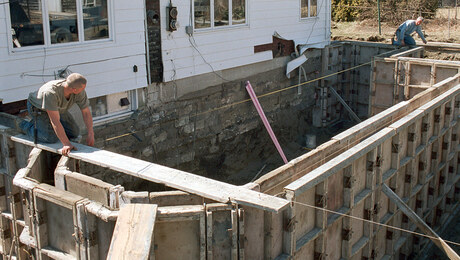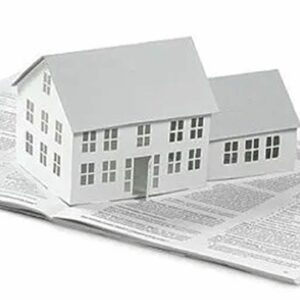This is happening in a house we built this summer and no one I talk to has ever had it happen.
The garage has severe moisture build up. It builds up on the two windows and is sopping wet and running right on to the sash and sill. It’s also building up on the insulated steel man door that goes to the exterior. So bad there that it has bubbled the paint. The insulated sandwich steel garage door is perfectly dry though. The drywall is also dry.
Two of the garage walls are exterior and two meet the house. All walls have R-13 fiberglass and the ceiling has R-38 fiberglass. No heat in the garage but it is about 40-50 degrees inside. Unfortunately one heat run had to be installed in the wall between the house and garage so I think that is providing some heat. They do park there cars in it every day.
This started happening when the temps got down around zero. I talked to the homeowner yesterday and he said it’s not as bad now. It’s been in the 20-30’s lately. Anyone have this happen? What causes it? How do you prevent it aside from opening a window a little. Which they tried and it helped too, but I can’t blame them for not wanting a window open.


















Replies
It's not surprising in the really cold weather. The surfaces you talk about, the glass and the uninsulated steel door are quite a bit colder than the air in the garage. So if you have much moisture it's going to condense on those surfaces, just like setting a cold glass of water out on a humid day. There is a source of moisture in the garage, and with the warm air the air in the garage gets quite humid, so it condenses easily on cold surfaces.
The source of moisture is likely the cars dripping rain and snow onto the concrete, which stays damp all the time, soaking the moisture like a sponge. There could also be some small contribution of moisture from the ground if there was no plastic under the concrete or the material on which it was poured holds moisture because of what it was made of or because it's not much higher in elevation than the surrounding ground.
The problem is worse because of the warmth in the garage, which evaporates the moisture.
The immediate solution is to crack a window to let cold dry air into the garage in the cold weather, and to sweep water and snow out of the garage. Next summer, a couple of coats of paint on the floor will help a little bit in reducing how fast moisture is given up by the slab. Other than that, it's not abnormal and something to live with when the weather gets really cold.
Thanks for the help.
I still wonder why we haven't had this problem with other garages?
Perhaps the garages were situated differently to the sun or other prevailing conditions.
Or the type and use of the vehicles is different. Or that they actually park cars in THIS garage and not in some of the others.
EricI Love A Hand That Meets My Own,
With A Hold That Causes Some Sensation.
I live in Eastern CT and have had exactly this same problem, even a frosted door knob!!. I leave the garage doors open for a while when I come home and the windows cracked a 1/4". this seems to help I was wondering on my next house if radiant heat in the garage floor would help? any suggestions out there?
Radiant heating may cause it to be a bigger problem. When the snow melts off your car the radiant heat will evaporate it into the air and it will make the air in the garage very humid and will collect on the first cool object in the garage. The way to get rid of this problem would to be install an exhaust fan that would work off an humidastat.
i'm on long island and have the same problem in a unheated shop. with the doors and windows cracked i would turn a couple of fans and keep that air circulated i oppose the fans one on my table saw pointed up or down i have ten foot cieling's and one on the floor pointed up or down and point the fans into the corners so when they hit the intersection of walls and cieling's it circulates with a fuller affect. although not perfect ,it helps greatly. short of heating the space , absolute prevention will be difficult I.M.H.O . there's that one wall insulated, on the living space . and the rest are not, if you keep on going with the moisture like that you'll end up having to replace the drywall in the future. you could insulate walls and cieling with vapor barrier, which would help with the drastic changes in temp's. but that some work .... slainte' bear
.
There is moisture presenrt. possible sources that come to my mind are:>Like several said, water dripping off the cars>? arethey actually running the engine inside to warm it up in th emorning? The exhaust could be dumping lots of moisture into the air, along with the CO that could eventually kill them> is the slab sealed? is the soil damp? Fresh new crete can give off moisture for the first year or so, but that could be increased if ther is an underground stream, spring, or high groundf water table if you did not use a VB under and seal the top. the crete wouldbe wicking water right up into the room. Tape palstic down to see if moistuere developes on top or under it.
Welcome to the Taunton University of Knowledge FHB Campus at Breaktime. where ... Excellence is its own reward!
Did you install a plastic vapor barrier before placing the concrete? Also, I think you have some significant air leakage from the house to the garage. Did you say it is roughly 40 degrees in there when it is zero outside? That is too much of a temperature differential and is what is causing the condensation (along with the source of the moisture).
Also, I'm with Piffin in that the homeowners may be warming up their cars in the garage. Even if the door is later opened, several quarts of water vapor could be pumped into the garage building materials during the car warm up process.
You said R-13 fiberglass. Rather minimal, especially if you are up north. What blows my mind is that in 2002 when we in NC adopted the IRC2000 we got a new energy code too - which allows R-13 insulation...
BTW - my Sis and BIL live in PA. What is the status of the building codes up there these days? 4 yrs ago they had a house built with little to no inspections required. BIL said he knew the builder was a good one because they mitered their corners on fascia and used scarf joints too... ;-)
I know R-13 is a little light. All the house exterior walls are r-19 and the garage is finished and insulated with r-13 so we and most of the builders around here use a 2x4 wall between garage and house and use R-13. If you add that wall to the garage walls you have R-26! That's how that works right? LOL.
The codes are just coming into effect since most guys had all there permits pulled for last year. Just in talking with the inspector I don't feel we'll have to much trouble. We'll see though if he really comes running for an inspection in the peak of the season. We're starting the season off with a small spec. If something does catch us off guard I guess we won't look like idiots to the homeowners.
Oh - OK - I thought you meant that all the walls (entire house) was insulated to R-13. I'd say R-13 is fine for the garage. Still, there must be a significant moisture source.
I'm guessing that PA is like other states where a model codes is adopted state wide, but then it is up to local counties and municipalities to enforce it - so - say maybe, in Phili, the codes may be well enforced since the lots of funds and employees where as in a remote area, code may be enforced by say the fire department, when/if they get around to it, while the county officials "debate" how they are gonna get the money to hire a real building inspector. Matt